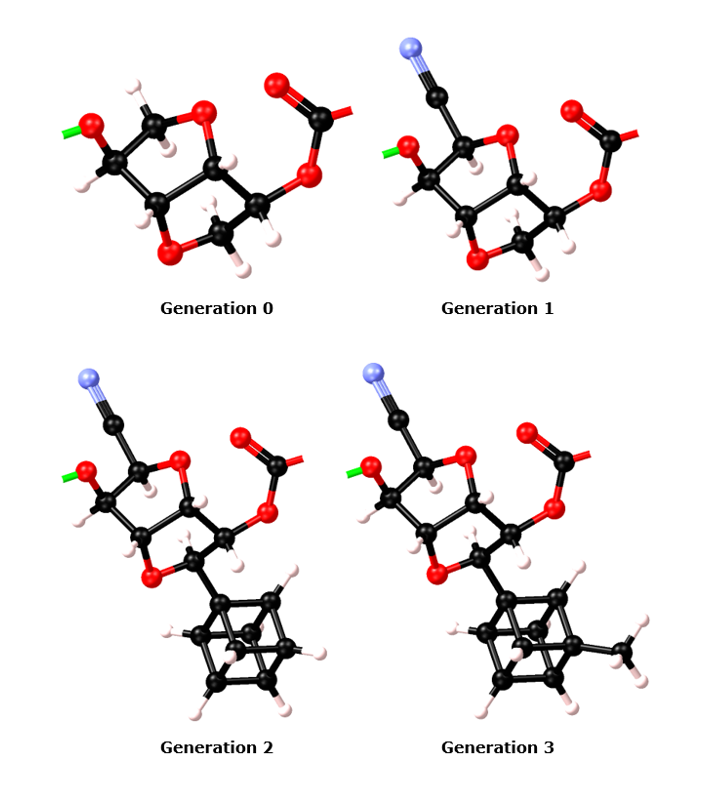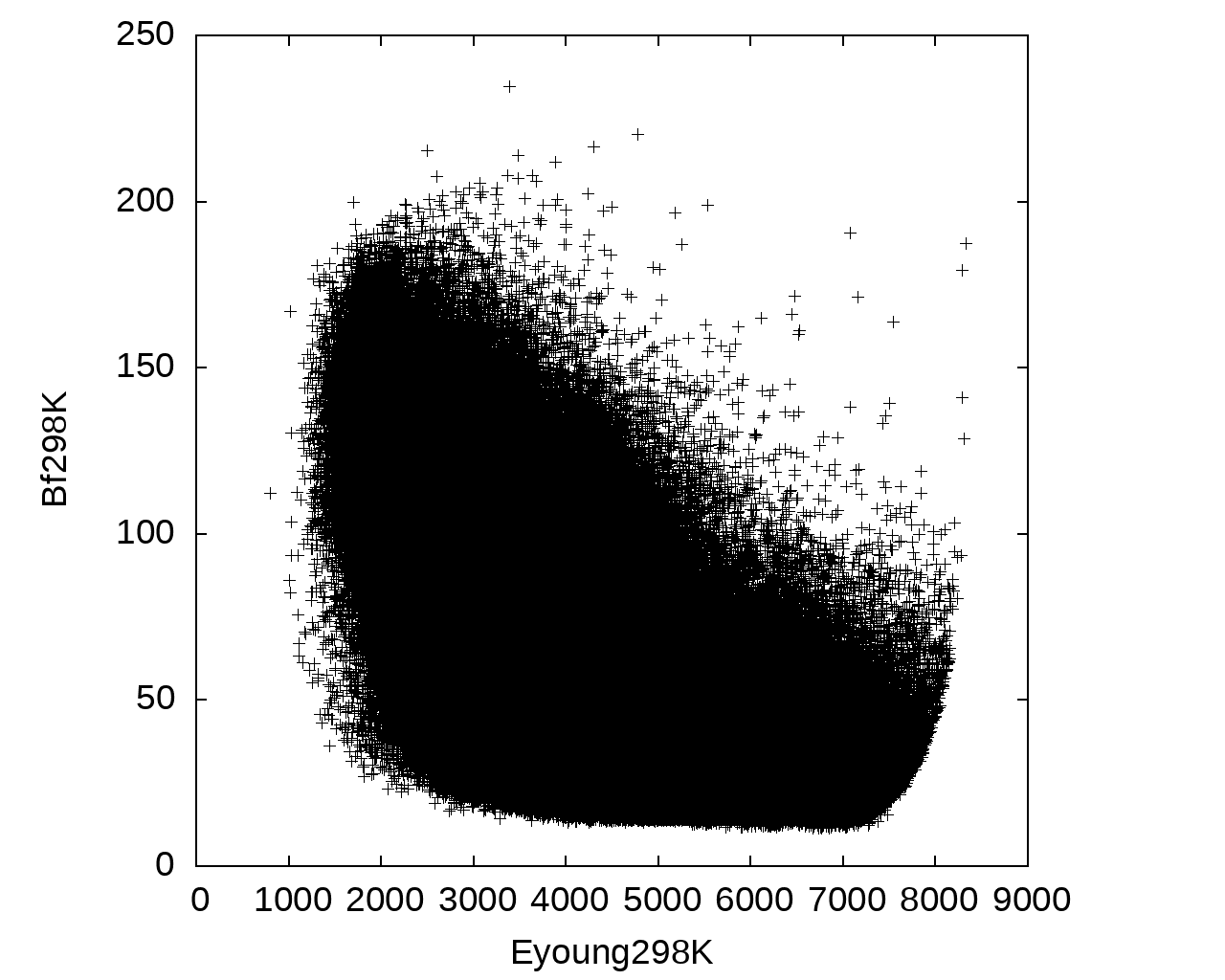MedeA Polymer Expert De Novo Polymer Design
At-a-Glance
MedeA®[1] Polymer Expert provides access to an extensive database (with more than 1.1 million entries) for polymeric systems, facilitating the exploration and de novo design of polymeric materials with desired properties. The underlying Polymer Expert Analog Repeat unit Library database (PEARL) has been constructed in a careful and logical manner to be both efficient and comprehensive in its coverage of synthesizable polymer systems. MedeA Polymer Expert provides two query interfaces to PEARL, with an efficient database search engine and reporting capabilities, allowing users to leverage substantial polymer knowledge and information in the creation of optimized and novel polymers. MedeA Polymer Expert derived results can be employed in a broad array of MedeA modules, facilitating ongoing exploration and insight generation for a range of physical properties.
Key Benefits
- Search polymer chemical space using properties
- Powerful yet simple query interface
- Highly efficient search engine
- Results can be analyzed interactively and within MedeA Flowcharts
- Fully integrated with MedeA polymer simulation tools
MedeA Polymer Expert facilitates de novo polymer design and optimization, by making it possible to search the vast space of possible polymer systems on the basis of desired properties. MedeA Polymer Expert is based on an analog database – Polymer Expert Analog Repeat unit Library (PEARL), created using analog fragment addition to a comprehensively curated library of repeat units taken from the available polymer suppliers, raw material manufacturers, and the current research literature. This foundation library contains more than 1,000 entries, and is maintained and refined by Materials Design. The PEARL database has been constructed based on this foundation, using analog building techniques, maximizing chemical diversity, and minimizing synthetic complexity. This results in an underlying database providing unparalleled insights into the critical determinants of the key physical properties of polymeric systems. With an efficient query interface, search engine, and reporting capabilities, MedeA Polymer Expert provides unique opportunities in polymer materials research.

An illustration of the construction of PEARL, taking poly(isosorbyl carbonate) (or PIC) as an example. Generation 0 is taken directly from the initial curated library. Derived structures are then built by adding fragments to the initial scaffold. The PEARL database has been constructed to maximize chemical property space coverage while minimizing synthetic complexity [3].

The PEARL (Polymer Expert Analog Repeat unit Library) database contains over 1.1 million repeat with diverse properties. The graph above shows a plot of brittle fracture stress versus the Young’s modulus for each of the repeat units represented in PEARL. The diverse range of these properties and the even sampling of both these properties are evident from this diagram containing over 1.1 million sampled points. A variety of such distribution plots, derived from the work of Ashby [4] , were employed in the development of PEARL to ensure even and comprehensive coverage of property space by the database.
The basis of properties stored in PEARL and searchable using MedeA Polymer Expert is the non-group based methodology pioneered by Dr. Jozef Bicerano [2] originally developed at Dow Chemical. The underlying methodology employed by MedeA Polymer Expert is described in the peer-reviewed literature [3].
Searchable Properties
Thermophysical
- Glass transition temperature, Tg
- Temperature of half decomposition
- Change in molar heat capacity at Tg
- Coefficient of volumetric thermal expansion
- Cohesive energy
- Cp of liquid
- Cp of solid
- Density
- Molar volume
- Solubility parameter
- Surface tension
- van der Waals volume
- Thermal conductivity
- Biobased origin
Electronic and Optical
- Diamagnetic susceptibility
- Dielectric constant
- Molar refraction
- Refractive index
- Volume resistivity
Mechanical
- Brittle fracture stress
- Bulk modulus
- Poisson’s ratio
- Shear modulus
- Shear yield stress
- Young’s modulus
Entanglement
- Entanglement molecular weight
- Entanglement length
- Critical molecular weight
- Steric hindrance parameter
- Characteristic ratio
- Molar stiffness function
- Additive portion of molar viscosity-temperature function
- Activation energy for viscous flow at zero flow rate
- Zero-shear viscosity
Transport
- Permeability to CO₂, N₂, and O₂
- Zero shear viscosity
- Diffusion coefficients for N₂ and O₂
Query Modes
Each property can be employed in querying the PEARL database in a variety of ways. The database can be searched by similarity (employing all properties), and via logical operations:
- Is a given property between specified values?
- Is a given property below a specified value?
- Is a given property above a specified value?
- Is the repeat unit bioderivable?
- Proximity to a given target value
These query elements can be combined in a flexible and intuitive manner to search chemical space for leads for testing, synthetic study, or additional simulation probing desired properties.

The MedeA Polymer Expert
PEARL Database
The PEARL (Polymer Expert Analog Repeat unit Library) database has been designed and constructed to span diverse chemistries and to limit the underlying complexity of the >1.1 million repeat units that it contains. Each entry in PEARL is annotated with MedeA P3C-derived properties and additional information, and its underlying topical structure is stored for rapid retrieval.
Required Modules
- MedeA P3C
- MedeA JobServer and TaskServer
Recommended Modules
Find Out More
Learn more about how MedeA Polymer Expert provides unique insights into polymers here.
Learn more about building repeat units in MedeA here: How to Build a Polymer with Customized Repeat Unit
Learn about building extended polymer models in this online tutorial: How to Build a Polymer
| [1] | MedeA and Materials Design are registered trademarks of Materials Design, Inc. |
| [2] | J. Bicerano, Prediction of Polymer Properties, third edition, Marcel Dekker, Inc. (2002). |
| [3] | (1, 2) J. Bicerano, D. Rigby, C. Freeman, B. Leblanc, and J. Aubry, Polymer Expert - A Software Tool for De Novo Polymer Design, submitted, (2023). |
| [4] | M. F. Ashby, Materials Selection in Mechanical Design, third edition, Elsevier, New York, 2005. |
| download: | pdf |
|---|